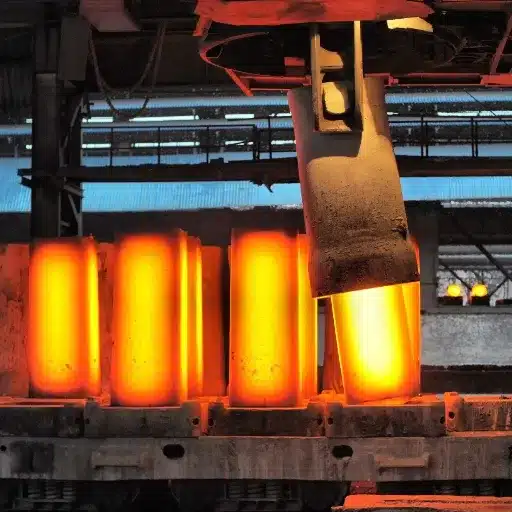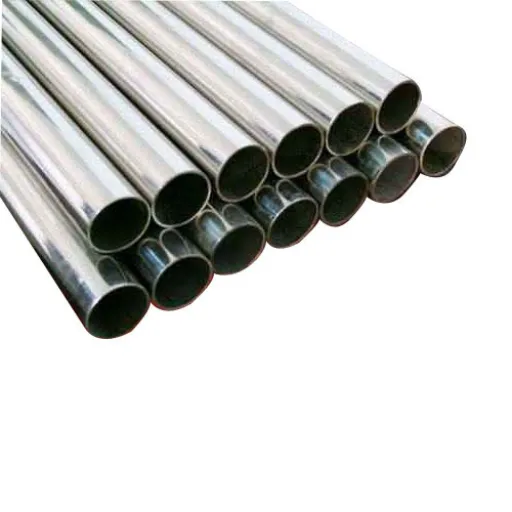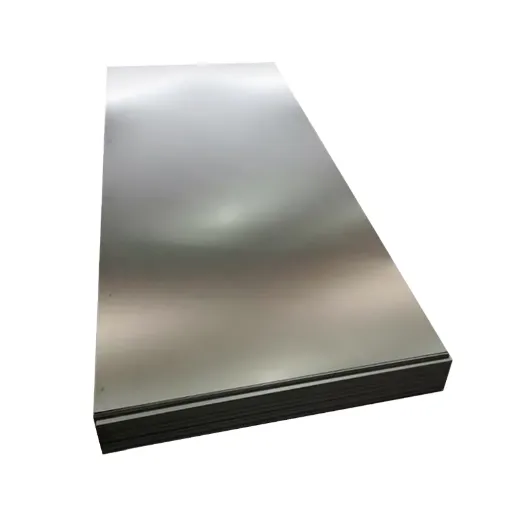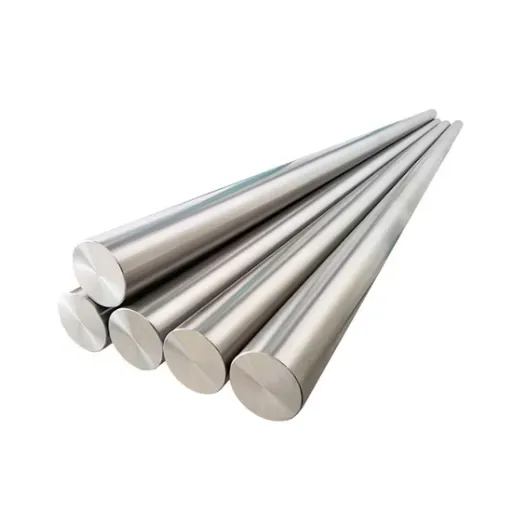Understanding melting points is extremely important in steel, metals, and alloys for a variety of industries-from manufacturing construction to aerospace and beyond. This article intends to present an incise and concise explanation of the melting points of specific materials so the reader can better grasp what these temperatures mean in everyday activities.
Whether you work with metals professionally or are simply curious about the science behind it, we will discuss here about the factors influencing melting points, their significance if applied, and why knowing these characteristics would drastically affect how a material performs. Read below to find out how varying metals respond to heat and the key to material selection for your needs!
Introduction to Melting Points
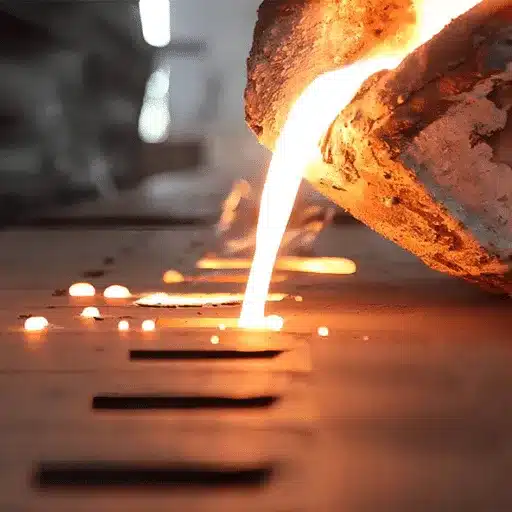
What Is a Melting Point?
A melting point refers to a defined temperature at which a solid turns to a liquid, given a standard atmospheric pressure upon it. This physical property is different for each substance and is useful in determining the application of materials.
Examples of Common Melting Points:
- Water: 0°C (32°F)
- Iron: 1,538°C (2,800°F)
- Copper: 1,085°C (1,985°F)
- Tungsten: 3,422°C (6,192°F)
- Gallium: 29.76°C (85.57°F)
Melting points show the strength of attractive forces acting between particles of a material. In substances with strong intermolecular or metallic bonds, such as tungsten, which melts at about 3,422°C (6,192°F), extremely high temperatures are required to convert the solid into liquid. On the other hand, with materials possessing much weaker atomic bonds—for example, gallium—liquefying conditions can be enjoyed at fairly low temperatures. The melting point of gallium is 29.76°C (85.57°F), which actually does melt in your palm.
Industrially, melting points are studied in materials science, building, and manufacture. For example, metals are joined in soldering by alloys that have a definite melting point, and materials that have high melting points—about 1,668°C (3,034°F) for titanium—find their use in aerospace components designed to be subjected to high-temperature environments. The melting point is a good indicator of how the material will behave and thus provides knowledge needed in predicting structural integrity, durability, and suitability for assigned tasks.
Importance of Melting Points in Industry
Knowledge of melting points is fundamental to all industries, which through temperature-related changes dictate matter behavior and its aptness for given purposes. The melting points of solder alloys, usually made of tin and lead, are most essential in electronics industries to develop proper connections without disturbing the circuits. Due to environment concerns, lead-free solder is now standard and, having a melting point higher than the tin-lead variety of roughly 217°C (423°F), would require a few changes on the manufacturing end.
Industry Applications:
- Aerospace & Automotive: Nickel-based superalloys with melting points exceeding 1,300°C (2,372°F) for jet engines and turbine blades
- Construction: Steel reinforcement with concrete for fire resistance at 1,370°C (2,500°F)
- Electronics: Lead-free solder applications requiring precise temperature control
Melting Point of Steel
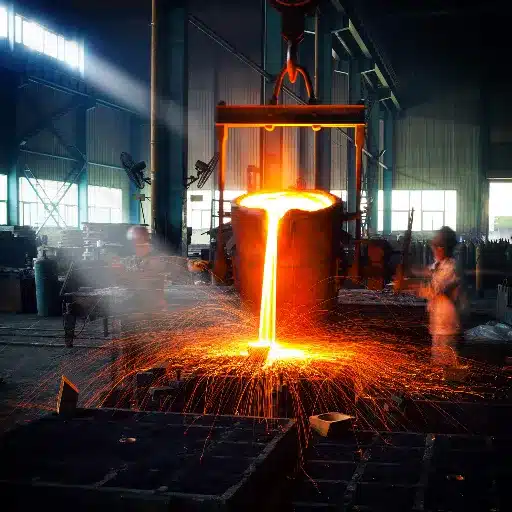
Steel melts at approximately 1,370°C (2,500°F)
Making it ideal for high-strength, high-temperature applications
Meaning and Importance of Steel Melting Point
The steel melting point is that temperature at which steel transforms from a solid state into a fluid one. Steel being an alloy, primarily made of iron and varying carbon content, has a melting point dependent upon its composition; technically, for a particular steel, the melting point would lie anywhere between 1370 and 1510°C (2500° and 2750° F).
Knowing the melting point of steel is an industrial consideration in manufacturing, construction, and metallurgy. Because of its high melting point, steel is one of the materials used in high-temperature settings, that is, in badly high-temperature equipment, such as power plants, automotive engines, and aerospace structures. The ability of steel not to lose structural integrity at this temperature is an asset to ensure safety and functioning. This steel melting point knowledge is also important in processes such as casting, welding, and forging, where melting points define target temperatures.
Types of Steel and Melting Points
| Steel Type | Melting Point Range | Key Characteristics |
|---|---|---|
| Carbon Steel | 1,370°C – 1,540°C (2,500°F – 2,800°F) |
Most versatile, used in construction and automotive industries |
| Stainless Steel | 1,370°C – 1,510°C (2,500°F – 2,760°F) |
Corrosion resistant, contains chromium, nickel, molybdenum |
| Alloy Steel | 1,370°C – 1,570°C (2,500°F – 2,860°F) |
Enhanced with tungsten, vanadium, manganese for durability |
| Tool Steel | 1,260°C – 1,510°C (2,300°F – 2,760°F) |
High hardness and wear resistance for tools and dies |
Factors Affecting Melting Points of Metals
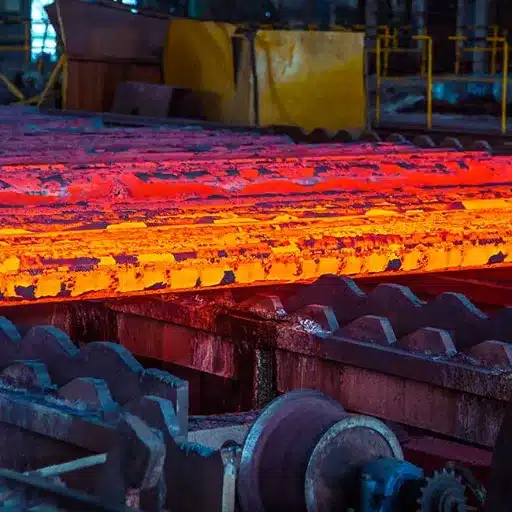
The several factors that affect the melting point of metals include atomic arrangement, bond type, and the alloying elements. As I understand, metals with high atomic or other strong bonds tend to have higher melting points. Likewise, the presence of alloying elements can either raise or lower the melting point, regardless of material pairs involved.
Composition and Alloying Elements
The melting point of any metal is greatly influenced by its composition and the inclusion of alloying elements. While a pure metal for example has a fixed melting point, when alloyed with other elements, the general melting process changes. This change comes due to different interactions between atomic structures of the new alloy.
Key Examples:
- Pure Iron: Melts at 2,800°F (1,538°C)
- Steel (Iron + Carbon): Melting range 2,500°F to 2,750°F (1,370°C to 1,510°C)
- Aluminum: Pure form melts at 1,221°F (660.3°C)
- Aluminum Alloys: Reduced melting points but improved strength and corrosion resistance
Temperature and Pressure Conditions
The knowledge of how temperature and pressure influence material properties is of utmost importance in engineering. Materials perform very differently when exposed to varying thermal and pressure conditions, which change their performance and stability.
In elevated temperature conditions, metals and alloys experience thermal expansion or shrinkage, affecting structural density and integrity. For instance, steel above 1,100F (593C) begins a steep decline in strength that disqualifies its use in high-temperature environments for any prolonged period. Nickel-based superalloys, however, maintain their strength even above 1,800F (982C), hence a material of choice for applications in jet engines and turbines.
Pressure also has its influence. At high pressures, some materials may undergo phase transitions, others simply become more compact. For instance, carbon becomes diamond at pressures greater than 725,000 psi. On the other hand, polymers tend to deform or escape failure when subjected to high-pressure environments and will require reinforcement to sustain their performance.
Applications of Melting Points in Various Industries
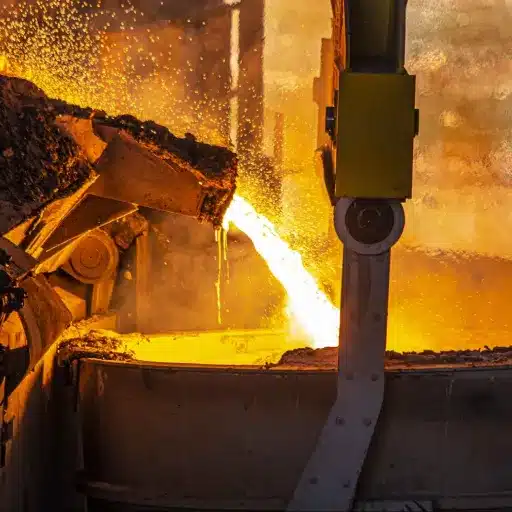
The application of melting points has very many uses in different industries. To me, it seems to be particularly important when selecting materials and product design. For example, for aerospace and automotive applications, knowledge of melting points of materials is important so that the materials withstand extreme conditions when in use and do not compromise on performance or hence safety.
Manufacturing Processes Involving the Melting of Steel
Melting steel is a major process in industry and manufacturing. Steel is melted by furnaces that can generate very high temperatures: electric arc and basic oxygen furnaces surpassing 2,500°F (1,370°C) in temperature. The steel are melted in these furnaces by mixing scrap steel with iron and other raw materials under intense heat.
Industry Statistics:
- Electric Arc Furnace Production: 29% of global steel production
- Global Steel Production (2022): Over 1.8 billion metric tons
- CO2 Emissions: EAFs produce ~0.3 tonnes per tonne of steel vs 2 tonnes from blast furnaces
- Sustainability: EAFs primarily use recycled steel, making them more environmentally friendly
Engineering Projects and Materials Selection
Among the quite important aspects of engineering projects is the determination of materials—these importantly affect the performance, durability, and cost of engineering applications. Engineers are hence led to consider a variety of factors so as to make an excellent choice for materials used in their particular applications; these include mechanical properties, corrosion resistance, tolerance to certain temperatures, and environmental impact.
Material Selection by Industry:
- Aerospace: Titanium alloys and composites for strength-to-weight ratio
- Civil Engineering: Reinforced concrete and high-strength steel
- Electronics: Advanced materials like graphene with 200x strength of steel
- 3D Printing: Thermoplastics, metal powders, and ceramics
Market Growth Projections:
- Graphene Market: ~38% CAGR between 2023-2030
- 3D Printing Market: $21 billion (2022) → $83 billion (2029)
Future Advancements in Steel Production
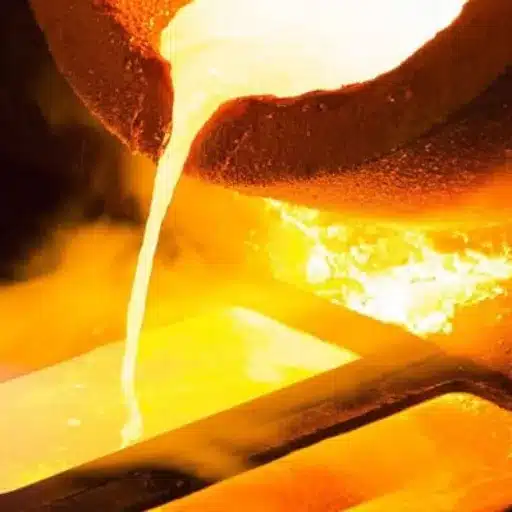
I feel that in the future, steelmaking techniques will increasingly concern sustainability and efficiency. Hence, the new techniques that employ green hydrogen-based steelmaking, carbon capture methodologies, and recycling processes could serve to greatly diminish the environmental impact of the industry without being compromised in delivering the highest level of quality.
Emerging Technologies in Steel Melting
Currently, new advancements are being made by the industry for steel melting applications, thereby increasing energy efficiency, cost efficiency, and ergonomic concerns. The greatest innovations can be noted in the use of Electric Arc Furnaces (EAFs), which melt scrap steel by means of electricity and thereby reduce the dependence on coal-based blast furnaces for steel production.
Breakthrough Technologies
Hydrogen-Based Steelmaking
Green hydrogen as reducing agent, zero carbon emissions, HYBRIT project targeting commercial scale by 2030
AI & Machine Learning
Predictive maintenance, process monitoring, 20% reduction in production costs, significant energy savings
Potential Changes in Alloy Composition
In the quest for increased sustainability and efficiency, potential alloy composition changes are being considered throughout the steel industry. High strength-low alloy steels are becoming increasingly popular on the strength-to-weight basis, reducing the need for other allied materials and hence energy consumed in production.
Sustainability Improvements:
- Micro-alloying Elements: Niobium, vanadium, titanium for improved mechanical properties
- Recycled Materials: Up to 58% reduction in CO2 emissions
- Alternative Composites: Aluminum, magnesium, silicon-based materials for density reduction
Reference Sources
-
Industrial Metal Service
- Title: What Is the Melting Point of Steel?
- Description: This source explains the melting temperatures of steel, which range between 1370°C and 1530°C, depending on the type of steel alloy. It provides a clear understanding of the factors influencing steel’s melting point.
-
SteelPro Group
- Title: What Temperature Does Steel Melt?
- Description: This article discusses the melting point of steel and its variations based on composition, offering insights into its practical applications in manufacturing and construction.
-
Industrial Metal Supply
- Title: Understanding the Melting Points of Metal
- Description: This blog provides a comprehensive guide to the melting points of various metals, including steel, and explains how these properties are critical for industrial and engineering applications.
Frequently Asked Questions (FAQs)
What is the melting point of steel?
Depending upon the particular type of steel and its composition, the melting point of the steel generally lies between 1425°C and 1540°C (2600°F and 2800°F). Several alloying elements affect the melting temperature considerably.
How do the types of steel influence melting points?
Different types of steel have differing melting points. For instance, high carbon steel usually has a melting temperature higher than that of other steels because of its carbon contents, whereas other alloys could have lower melting points depending on their compositions.
What are the melting temperatures of the common metals?
Common metals possess different melting points. For example, pure copper melts at 1085°C (1985°F), whereas bronze melts anywhere from 900°C to 1000°C (1652°F to 1832°F) depending upon the particular composition.
What is the difference of solidus and liquidus in melting steel?
The solidus and liquidus describe the melting temperatures of metals. The solidus is the temperature below which a metal is totally solid, whereas the liquidus is the temperature at which it begins to melt. Steel transits from solid to liquid in between these two points.
Which one among metals has the highest melting point, and which has the lowest?
Tungsten has the brilliant melting point of about 3422°C (6192°F) amongst metals, whereas mercury possesses one of the lowest melting points, -38.83°C (-37.89°F). From this, we can see that metals have considerable variation as far as melting characteristics are concerned.
How do copper alloys fare as far as melting points compared to steel?
Generally, copper alloys have a lower melting temperature as compared to steel. For instance, brass, an ordinary copper alloy, melts at about 900°C (1652°F), whereas steel’s melting temperature is much higher, thus, placing steel as a higher order of utility for high-temperature applications.
Key Takeaways
- ✓ Steel melts at approximately 1,370°C (2,500°F) depending on composition
- ✓ Different steel types have varying melting points based on alloying elements
- ✓ Understanding melting points is crucial for industrial applications
- ✓ Future steel production focuses on sustainability and efficiency
- ✓ Emerging technologies like hydrogen-based steelmaking show promise

